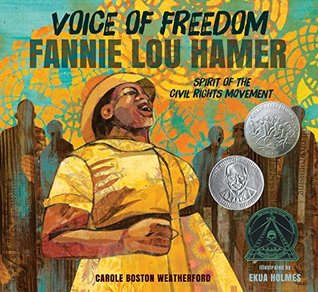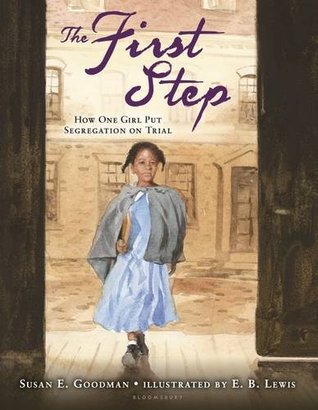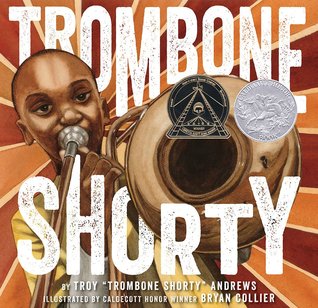Thanks in large part to the ALA Youth Media Awards, I've collected up a bunch of new books with inspiring characters and/or stories.
And this spunky girl reinforces the importance of children being able to see themselves in the books we have in our classrooms and libraries -- take time to click through and watch the video! (via CBS ThisMorning)
Voice of Freedom: Fannie Lou Hamer, Spirit of the Civil Rights Movement pairs nicely with The First Step: How One Girl Put Segregation on Trial. Fannie Lou Hamer deserves to be more well-known for a lifetime of participation in marches, sit-ins and voter education and registration efforts. Similarly, readers should know the story of a well to do black girl from Boston, who, with her parents, fought against segregated schools in 1847 -- 100 years before the more famous Brown v Board of Education.
Drum Dream Girl: How One Girl's Courage Changed Music pairs along a musical theme with Trombone Shorty. Drum Dream Girl is inspired by a Chinese-African-Cuban girl who broke Cuba's taboo against female drummers, while Trombone Shorty tells the story of a New Orleans trombone player who not only made his dream of becoming a musician come true through a lifetime of hard work, but also has begun the Trombone Shorty Foundation to preserve the musical history of New Orleans.
The Case For Loving: The Fight for Interracial Marriage and Emmanuel's Dream: The True Story of Emmanuel Ofosu Yeboah both tell stories of holding fast to a dream.
Growing up Pedro: How the Martinez Brothers Made It from the Dominican Republic All the Way to the Major Leagues and (the 2009 title) You Never Heard of Sandy Koufax?! would make a nice baseball pairing that feature players from the Dominican Republic alongside a Jewish player from Brooklyn.
The last two honor a couple of the dominant cultures in my school -- Muslim and Hispanic. 1001 Inventions and Awesome Facts from Muslim Civilization is an inviting book for browsing and learning, and Funny Bones: Posada and His Day of the Dead Calaveras tells the story of Mexican artist José Guadalupe (Lupe) Posada and how he created an iconic Day of the Dead art form.











